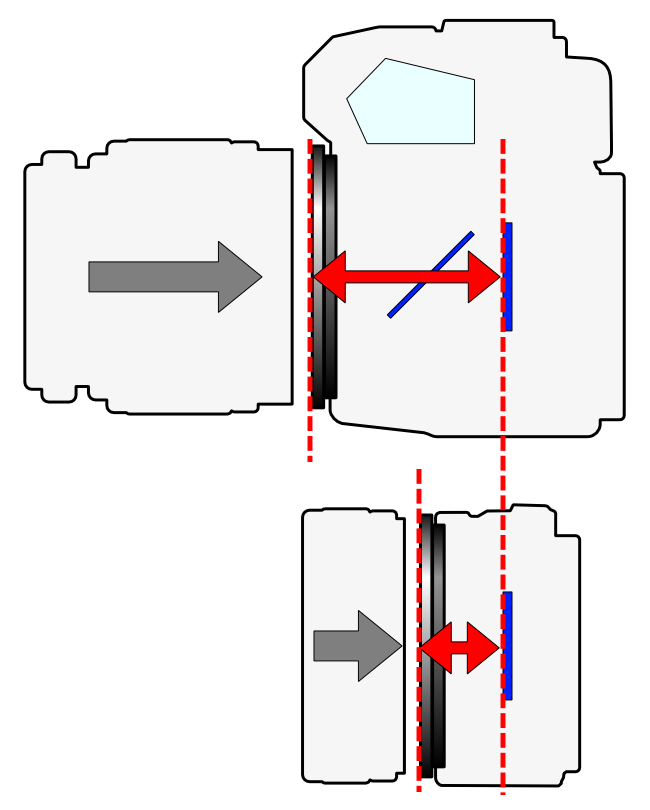From here.
For an interchangeable lens camera, the flange focal distance (FFD) (also known as the flange-to-film distance, flange focal depth, flange back distance (FBD), flange focal length (FFL), or register, depending on the usage and source) of a lens mount system is the distance from the mounting flange (the metal ring on the camera and the rear of the lens) to the film plane.

It’s easier to design a smaller lens for a short FFD camara. That’s why the lenses for SLR cameras are normally much bigger than the lenses for rangefinder cameras.
The reason why an SLR camera has a longer FFD is that, it must contain the “reflex mirror”. So it has to have a longer FFD than a rangefinder camera which doesn’t have a reflex mirror. That’s the price of having a “what you see is what you get” view finder.
That’s also one important reason why SLR cameras and rangefinder cameras coexist: SLR has better view finder but bigger body and lenses, and rangefinder has compact body and smaller lenses without a “through-lens” view finder. Either one cannot replace the other.